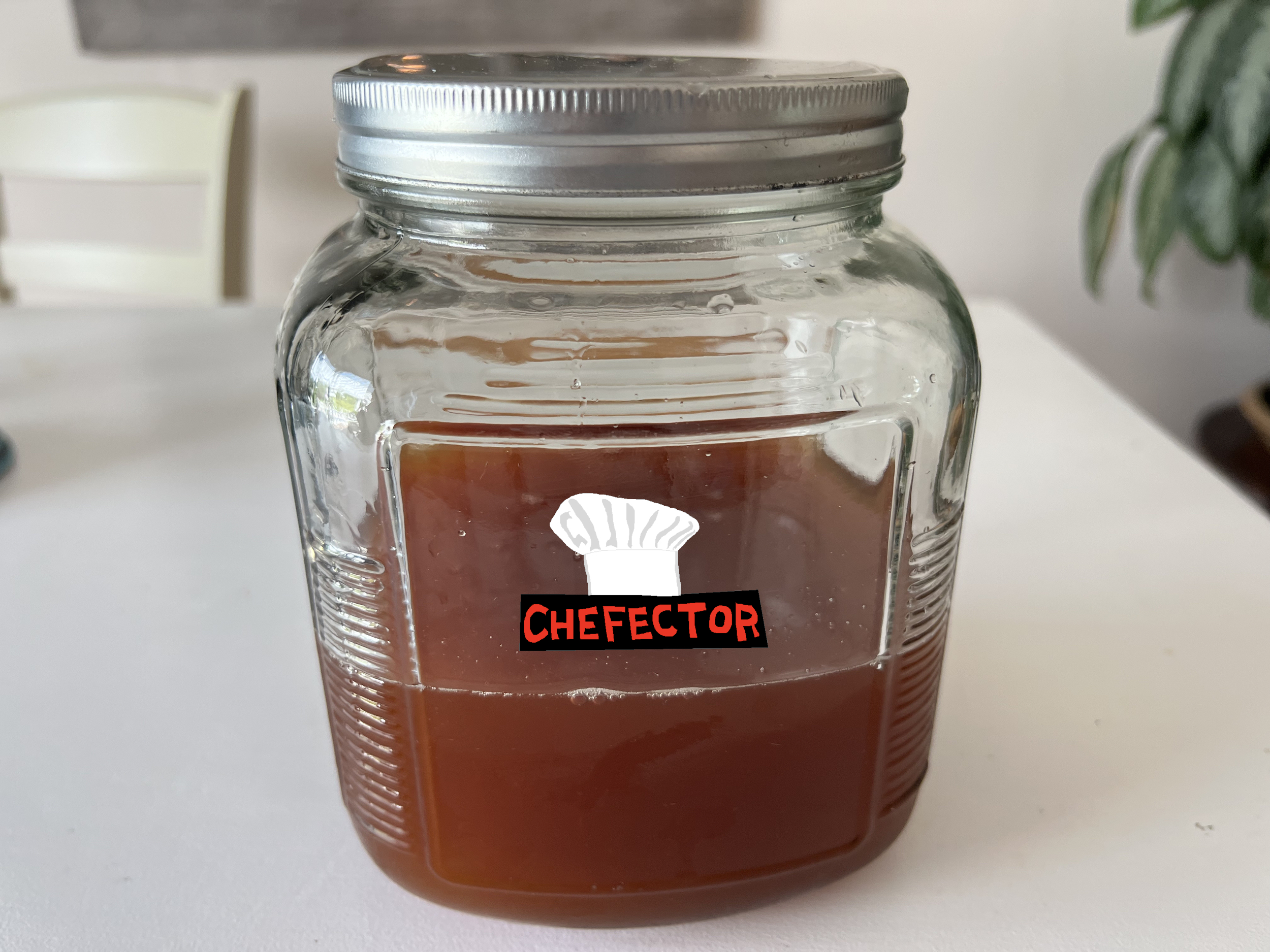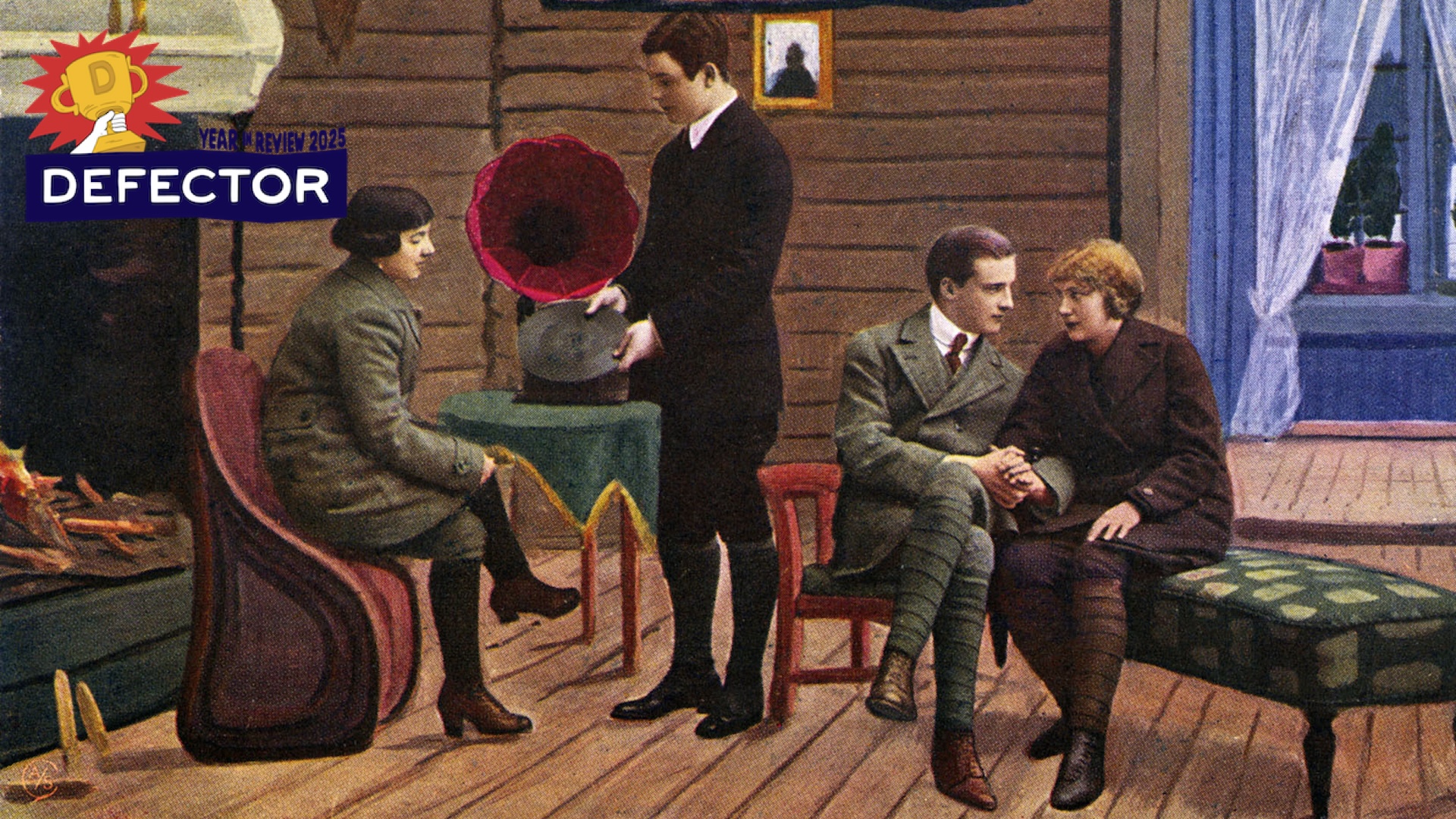Late-arriving heat waves notwithstanding, summer is so over. Leaves are falling. Birds are migrating. Apples are ripening. You cannot stop it! This is the time to start preserving things, brining and jarring cherries for future cocktails, smushing the last of summer's berries into sterilized jam jars, mourning the end of Tomato Time by canning or making confit of what's left of the summer haul. I am not nearly cool enough to successfully preserve solids—these projects can go wildly sideways—but I am just cool enough to preserve juice. This is easy, low-stakes, and rewarding. All you have to do is make some shrub.
Shrub is an acidulated fruit syrup. The name originates from the Arabic word sharab, which translates as "drink," and which suggests shrub's other common, somewhat less appealing name, "drinking vinegar." Many ages ago, it was made by preserving whole fruit in barrels of booze—usually rum—in such a way that acetic acid would convert some of the alcohol into vinegar. Nowadays it's mostly made by combining a fresh fruit syrup with some tasty high-quality vinegar. You're probably not someone who chooses to sip vinegar, for good reason: Most vinegar is harsh unless mixed with balancing agents, like olive oil and herbs and so forth. But part of what makes fruit delicious is the presence of sugar, and it is the sugar and fruit in shrub that makes this concoction scrumptious. There's a good trade happening within it: The vinegar preserves the fresh fruity qualities of the juice, and the fruit and sugar balance the vinegar, so that it becomes less a taste than an invigorating electric sensation on the edges of your tongue. A very good bartender named Wilbur once described good shrub to me as "juicier than juice," and he was right: The sharpness of the vinegar takes that faithful fruit flavor and somehow vivifies it, pushing it to every corner of your mouth, so that you can almost feel your salivary glands standing on a desk and shouting, "O Captain! My Captain!"
There are two very easy ways of making good shrub. One is hot: Put equal amounts of fruit and sugar into a saucepan over medium heat and stir and smush until all the sugar has melted and the juice has cooked out of the fruit, then strain out the fruit, cool the syrup, and add vinegar. The other is cold the whole way, or at least cool, and involves trusting the acid found in raw fruit to slowly dissolve and denature the sugar without any help from heat. You can make a gorgeous citrus syrup in a couple of hours this way, because citrus fruits are so acidic, but citrus ripens in winter for those of us in North America, and this project is about preserving the fruits of summer. You might think that means we will out of necessity opt for the hot method, and a slightly less fresh finished product. Not so! There is plenty of acid to start the sugar melting in just about any fruit you can think of, and the vinegar, when added, will take it the rest of the way.
The shrub I made for this project was flavored with black plums and ginger, because stone fruits are the highlight of late-summer fruit, and because I just happen to think that ginger is a great flavor for the transition between the bright tastes of late summer and the dark, spiced flavors of autumn. The best fruit for shrub-making will be somewhat past ripe, as this fruit will smush easier and give up its juice more readily. Since I share a home with a toddler, I always have a surplus of abandoned fruit on my counters and in my refrigerator's produce drawer. Step one is to slice, pit, and hack up the plums; mince the ginger; and dump all of this into a large bowl or jar.
You can go cuppa-cuppa-cuppa mode for your ratio of fruit to sugar to vinegar, like Truvy from Steel Magnolias, and it will turn out fine. I had about two cups of fruit, give or take, so I added to the jar two cups of sugar. It's always tempting to go heavier on the sugar when making fruit syrup, as more sugar, when melted, will mean more syrup. You can usually get away with it if you're working with lemons or oranges, due to the amount of juice and acid they release, or if you're using a fine processed sugar, like the dreaded caster sugar, which will melt more easily. For my shrub I chose raw turbinado sugar, because I have a large bag of it taking up space in my pantry and no other good use for it. Whatever your choice of sugar, pour it into the jar or bowl with the fruit and use a spoon or fork or whatever to stir and smush it around until everything is pretty evenly mixed. Because I was using a jar with a screw-top lid, I was able to shake the hell out of it, which is always satisfying. Tightly cover the bowl or jar and put it into your refrigerator.
In very little time, the sugar will begin to melt, and soon it will look like a delicious dark syrup with softening fruit floating around in it. This is how my syrup looked after almost two full days:
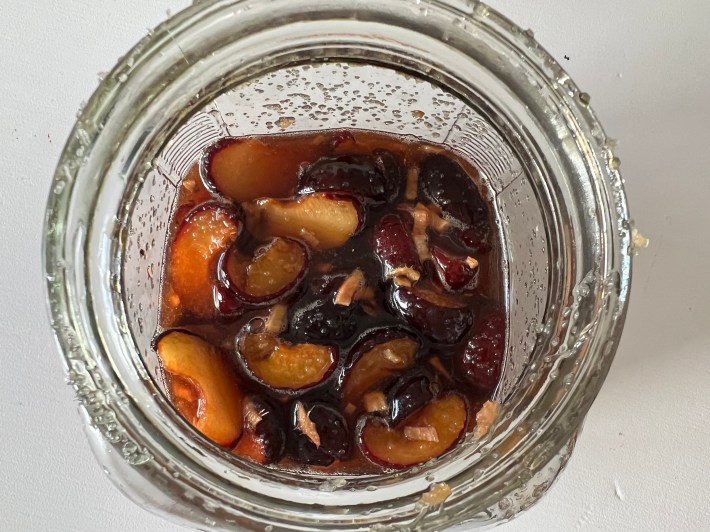
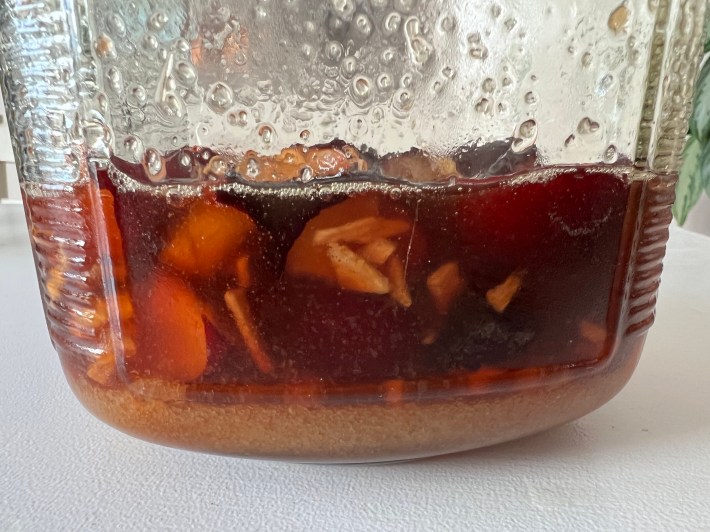
There's no water in there; this all happened in a cold refrigerator. It's just the juice that the sugar has pulled out of the fruit, and the syrup formed when the sugar crystals melt from acid exposure. A milder fruit combination could take longer—although it's hard to find a much milder late-summer fruit than black plums—but with a couple days whatever fruit you use will have melted most of the sugar. Now you want to strain out the fruit, which I accomplished by setting a fine sieve over a large glass bowl, like so:
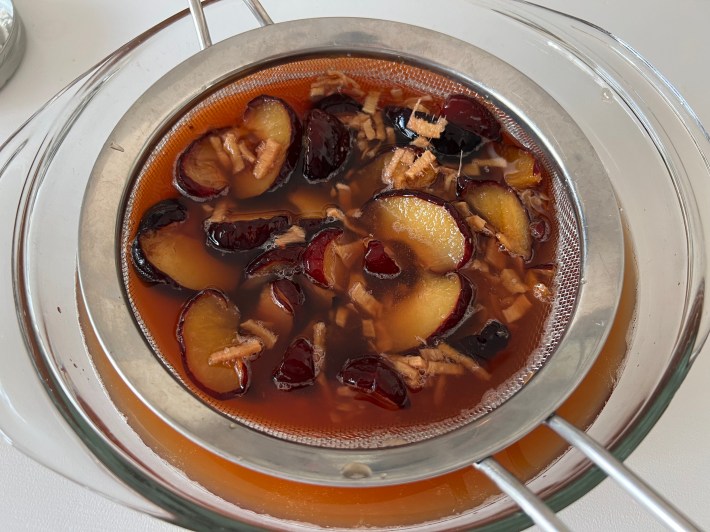
The more careful you are while doing this, the better success you will have at keeping all of the undissolved sugar in the syrup, instead of clinging to the used-up fruit, which you will now discard. All that's left to do is to stir some vinegar into your syrup. For this step, I used two cups of a good, funky, clouded, unfiltered apple cider vinegar. I like to imagine that this vinegar, which still contains some of "the mother," will do fun science-y things in my shrub, but mostly I chose it because it has a much more vivid taste than the clear pasteurized stuff, and apples are the other signature late-summer fruit. Once your vinegar and syrup are mixed, put the shrub into a sealed bottle or jar and store it in your fridge.
Your newborn shrub might still be very cloudy at this stage, especially if you used unfiltered vinegar and raw sugar. The vinegar will continue the work of melting the sugar. Within a week you will have a finished shrub, ready for consumption. If you use refined sugar and pasteurized vinegar, and especially if you use a fast-melting acidic fruit, there's a decent chance your finished shrub will be quite clear. As you can see from the image at the top of this blog, even my finished shrub—which needed another couple days for the last of the sugar crystals to finally dissolve—is still cloudy. This is not a damn beauty contest!
What's important is that my shrub is powerfully, breathtakingly tasty, right there in the center of the tongue with fresh ripe plums and spicy with ginger, but with a big juicy acidic zing that makes you noisily smack your lips. It's so good. Shrub is much too sweet and tart to drink on its own; mix it with some club soda into a fizzy soft drink. It also makes for a turbo-charger for cocktails. You can use it with bourbon and angostura, or with gin and seltzer, or with rum and ginger ale, and feel like a world-class mixologist. You can also drizzle it over vanilla ice cream. Have a shrub float! You will not have a hard time figuring out what to do with something this delicious sitting in your fridge, and it can live there for at least six months and possibly as long as a whole year, thanks to the powers of vinegar. Congratulations, you are now a preserver of food. May the joy of this successful undertaking and the spoils of your effort carry you through the cold and dark of winter.
